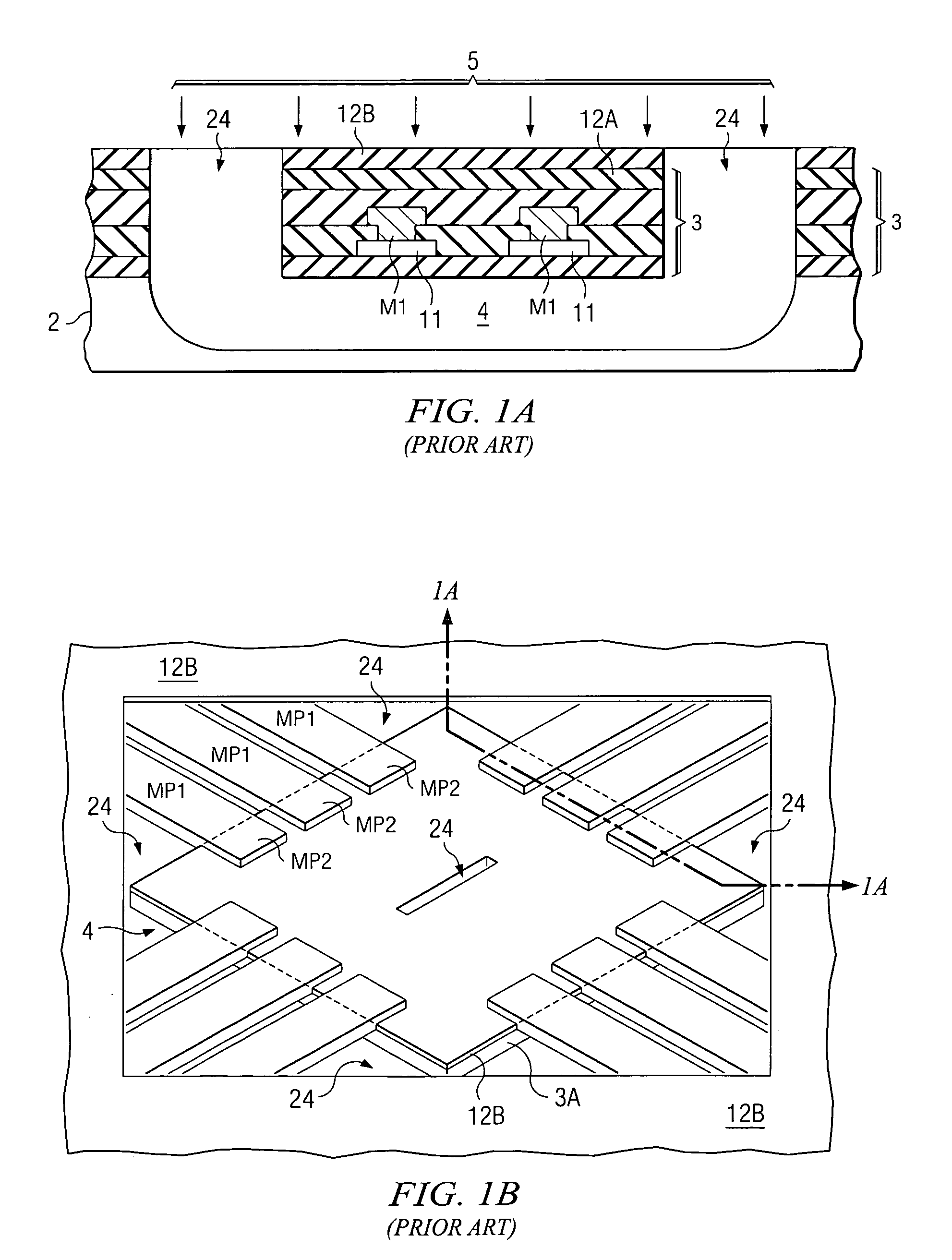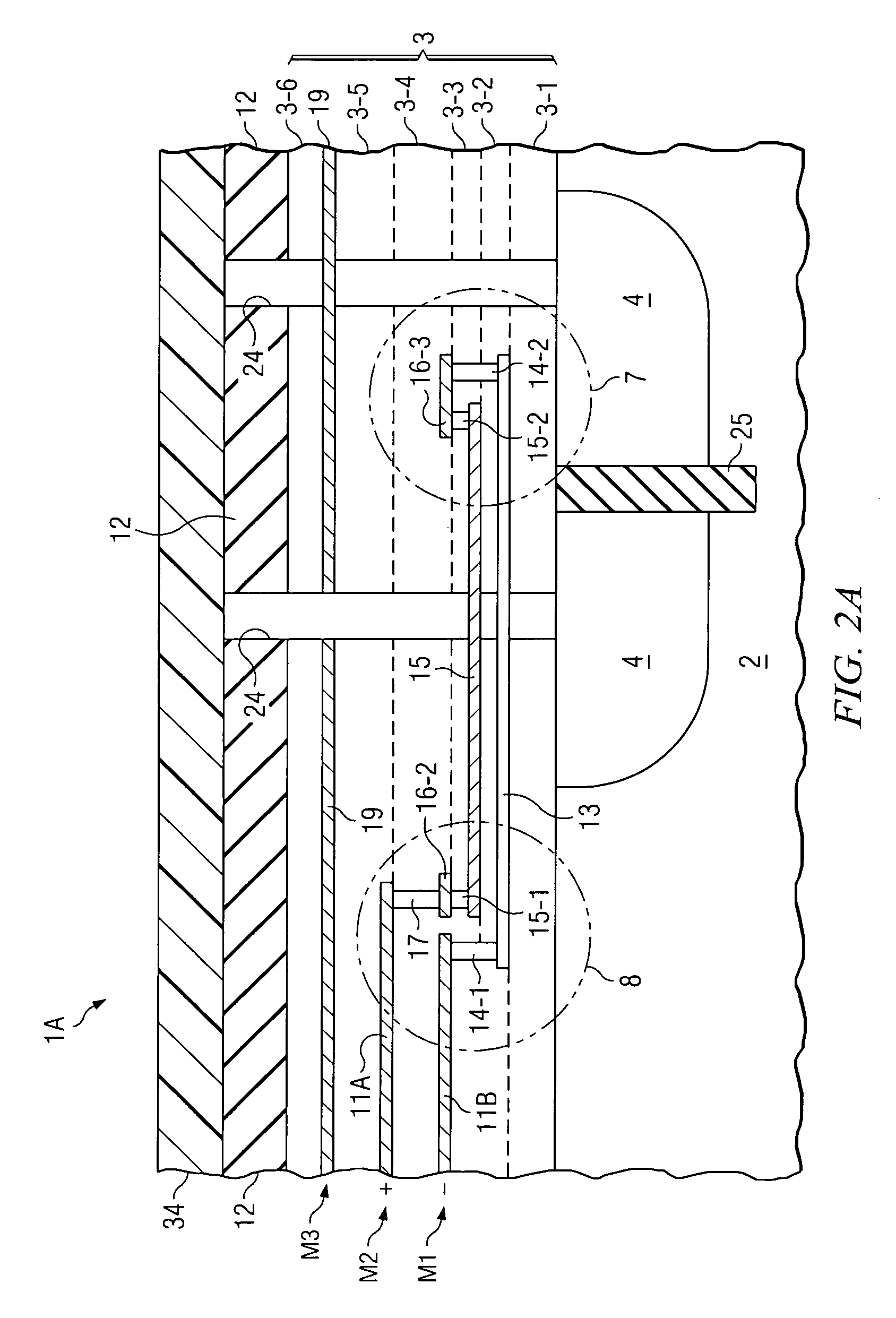Etching cavity structures in silicon under dielectric membrane
a technology of dielectric membrane and cavity structure, which is applied in the direction of optical radiation measurement, instruments, coatings, etc., can solve the problems of unacceptably large number of device failures, unfavorable device maintenance, and fragile membrane structure, etc., to reduce parasitic capacitance in an integrated circuit, the effect of robustness and economics
- Summary
- Abstract
- Description
- Claims
- Application Information
AI Technical Summary
Benefits of technology
Problems solved by technology
Method used
Image
Examples
Embodiment Construction
[0056]FIG. 2A shows a cross-section of an integrated circuit IR sensor chip 1A which includes silicon substrate 2 and an etched cavity 4 therein. Silicon substrate 2 in FIG. 2A typically includes a thin layer of epitaxial silicon into which cavity 4 is etched, and also includes the silicon wafer substrate (not shown) on which the epitaxial silicon layer is grown. IR sensor chip 1A includes dielectric stack 3 (also referred to as SiO2 stack 3) formed on the upper surface of silicon layer 2. SiO2 stack 3 includes multiple oxide layers 3-1,2 . . . 6 as required to facilitate fabrication of N-doped polysilicon (polycrystalline silicon) layer 13, titanium nitride layer 15, tungsten contact layers 14-1, 14-2, 15-1, 15-2, and 17, first aluminum metallization layer M1, second aluminum metallization layer M2, third aluminum metallization layer M3, and various elements of CMOS circuitry (not shown), all within SiO2 stack 3.
[0057]The various layers shown in dielectric stack 3, including polysi...
PUM
| Property | Measurement | Unit |
|---|---|---|
| diameter | aaaaa | aaaaa |
| diameter | aaaaa | aaaaa |
| diameters | aaaaa | aaaaa |
Abstract
Description
Claims
Application Information
 Login to View More
Login to View More - R&D
- Intellectual Property
- Life Sciences
- Materials
- Tech Scout
- Unparalleled Data Quality
- Higher Quality Content
- 60% Fewer Hallucinations
Browse by: Latest US Patents, China's latest patents, Technical Efficacy Thesaurus, Application Domain, Technology Topic, Popular Technical Reports.
© 2025 PatSnap. All rights reserved.Legal|Privacy policy|Modern Slavery Act Transparency Statement|Sitemap|About US| Contact US: help@patsnap.com



